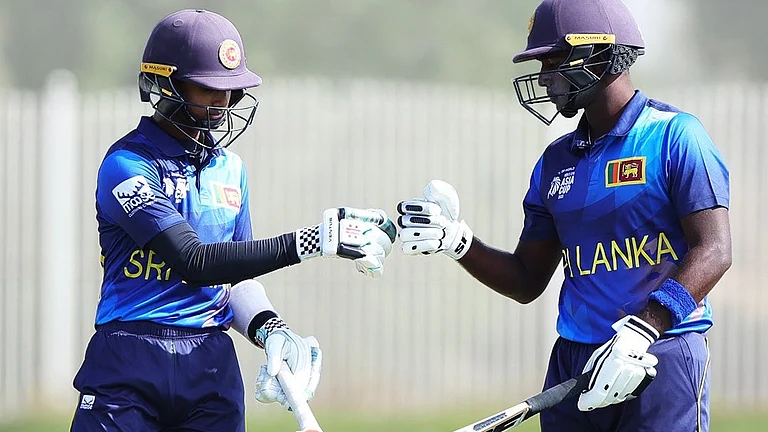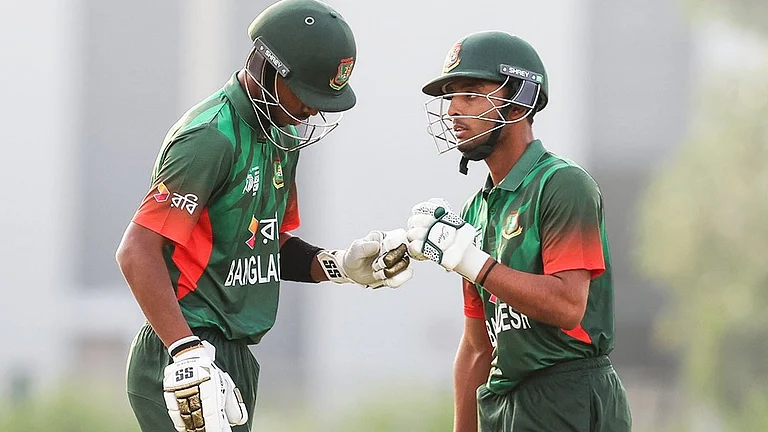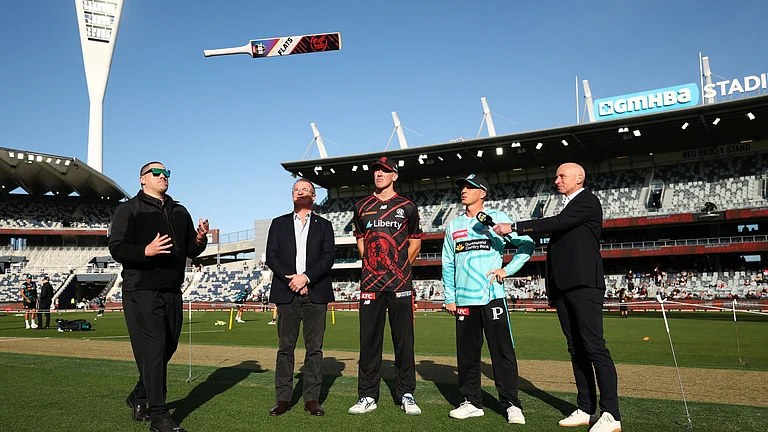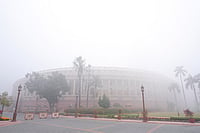Who hasn’t heard of the first ritual obeisance paid by the Indian flying home from a trip abroad? At a neat little shrine where it’s customary to show up before heading for the exit: the airport duty-free where you stock up on the Johnnie Walkers, Black Labels, Chivas Regals and other Scotch whiskies. One reason is that genuine, imported alcohol attracts a 150 per cent tariff outside. But there’s a better reason—an unstated truth that hangs over a country that loves to quaff alcohol. If you apply global standards, much of the Indian spirits available at your friendly neighbourhood booze shop amount to nothing more than fakes.
Its ringmasters and impresarios hide behind loose legal terminology that lets them off the hook. The regulatory system for alcohol here—helmed by the Bureau of Indian Standards (BIS)—confers on these products the veneer of legitimacy. But in most parts of the world, it would have been called out for what it is: a scam. One that gets measured in millions of pegs. The actual, scientific truth is this—in India, the world’s largest consumer of whisky by volume, whisky is not whisky. It’s daru, made of molasses. Neither is Indian brandy really brandy. Vodka is in a grey territory. And even Indian rum is iffy. This is not rhetorical, not about the quality—most consumers have a fairly good idea that they scrape at the bottom of the barrel. This is to do with facts. It’s simply wrong, from any reasonable norm that should cover marketing, to stick those labels on what is sold. And it’s a Rs 41,000-crore market we’re talking about—that was the last estimate, in 2014, by the International Wine and Spirit Research—and it runs on a fundamental misrepresentation to consumers. This is the reason why most Indian brands—and they number over 1,500—aren’t even admitted into European markets.
The tale has a uniquely Indian twist. Much of what is mass-market whisky in India smells, tastes and looks like whisky. The ‘better’ ones can be surprisingly smooth and transport the drinker to an eclectic world flavoured with all those high-sounding descriptions: punchy apple and sour lemon as top notes, anchored on a bed of woody smokiness. Pretty much like the premium stuff—except you’re really being sold a lemon. Why?
Because scotch and bourbon, the American variant, are distilled from grains, as they should be. And the base of Indian ‘whisky’ is plain spirit distilled from molasses, the dark, viscous liquid that’s a byproduct of the process of extracting sugar from sugarcane. That’s already a fundamental error. Next: few are aged sufficiently, which is as much of a prerequisite as the base. Now add the ‘top notes’. Into this, add 12-15 per cent of Scotch from malted barley—along with artificial flavours and colours! You get a hideous oxymoron: Indian-made foreign liquor (IMFL).
Does it matter? It does—and not just technically. The law doesn’t help, for what evolved as homegrown short-cuts have now become the norm. Indian legal definitions have suitably incorporated the local variations that depart in a fundamental way from what’s authentic. Yes, they are alcoholic products that try to approximate to the real McCoy. But are they ‘whisky’, ‘brandy’, ‘vodka’? Only in the realm of Alt Facts, as the fashionable term goes. In the old world, they used to call it a lie.
Despite this swindle, Indians love their booze. Here are some swig stats. India is the ninth-largest market globally. Indians consume the most whisky in the world by volume! Not by value—perhaps an obvious fact. (The biggest overall guzzlers are Russians.) The biggest firm, United Spirits Limited, itself has over 100 brands. And about 20 million Indians reach the drinking age each year.
The primary issue is, distillers have never felt it necessary to disclose, for the sake of propriety, what’s behind the label. Consumers don’t care much either. The language of consumer rights has never entered the frame—rights seem to be suspended, with drinking dubbed a social ill. Constitutional provisions seek to promote the abstinent behaviour espoused by Mahatma Gandhi, but Indians like to drink.
The BIS standards for various alcoholic beverages—which are now the norm—came into force as early as the 1960s and have been updated down the years. These benchmarks are drawn by the drinks and carbonated beverages sectional committee and approved by the food and agriculture division council. The food division is big, with representations from government institutions and industry. This interface is where the problem lies.
“When consumer standards are decided, the industry often has a heavy hand and there is poor consumer representation,” says Pradeep Mehta, secretary general of Consumer Unity and Trust Society International, a leading consumer advocacy and research organisation. “So if you’re asking whether or not molasses should or can be used for alcoholic drinks other than rum, well, that’s now become an established practice.” According to Mehta, from a consumer’s point of view, the demand should at the very least be for minimum transparency, labelling and disclosure information. “Food requires detailed labelling, why not alcohol? Why should the consumer not know what his whisky contains?”
How exactly does our alcohol depart from the global norm? Check it against Europe’s 2008 definition. This stipulates that “whisky or whiskey is a spirit drink produced exclusively by distillation of a mash made from malted cereals with or without whole grains of other cereals”. The Scotch Whisky Regulations, 2009, put out by the Scotch Whisky Association, chisel it down further to what can be called Scotch. The Americans have their own. So do the Mexicans. But what they all agree on is that the spirit for whisky has to be grain-based and the manufacturing methods need to conform to certain features like ageing.
The most important stipulation is that the essential characteristics—flavour, consistency, colour and taste—should not be achieved by additives. Bottomline: however it is accomplished, this distilled alcoholic beverage is to be made from fermented grain mash from any of these grains: barley, corn, rye or wheat. And it has to be aged in charred white oak casks for three years to give it its distinctive characteristics. The norms for bourbon, in fact, are so strict that new oak barrels must be used so that the full bouquet of wood flavours comes in. Scotch matures in used barrels. Japanese whiskys are aged in Mizunara, an oak-like tree. Either way, it’s the communing with the wood that slowly exorcises the sprites and the coaxes the ghosts to inhabit the spirit.
Quick swig
How molasses became the dominant source of Indian spirits has to do with history. The modern methods of distillation came with the British. Take, for instance, India’s oldest Kasauli distillery—set up by Edward Dyer in the early 19th century with British equipment. Dyer, who wanted to simulate the weather of Scotland, settled for the cooler climes of Kasauli upcountry. British policies promoted sugarcane to raise farm incomes (so that higher land taxes would ensue). Since foodgrains were always in short and erratic supply and famines common, molasses became the preferred biomass for distilling neutral spirits.

“Whatever was the available agricultural surplus became the main source for alcohol. Barley was the main crop in Scotland, rye and corn in Americas and cane in Asia,” says Vikram Achanta, a sommelier who founded talleeho.com. McDowells No 1, Officer’s Choice and Royal Challenge are best-sellers that are “partly molasses-based”.
This social context aside, there is a legal backdrop to why mass-market Indian spirits are actually cheap moonshine that passes off as genuine. To begin with, specifications set by the BIS are the only ones spirits must conform to. The definitions under IS 6749 apply to three types of whiskies: malt or grain whisky, blended malt or grain whisky and just whisky. The first two largely conform to global definitions. It’s the third category—plain “whisky”—that allows for great latitude and local variations, often at the expense of authenticity.
“Since existing alcohol labelling laws leave a regulatory grey area, there could be unknown or undeclared health impacts depending on what’s used,” says V. Sreejith, a partner with Charu Associates, a law firm that has reviewed the latest draft guidelines for alcohol by the Food Standards and Safety Authority of India.
Under Indian definitions, stipulations for “malt or grain whisky” are close to international norms—it’s an alcoholic distillate produced from the fermented mash of malted or unmalted cereals or a mixture of both. The distillation has to bear the distinct aroma and taste derived from “raw materials or constituents formed during fermentation”. As for single-malt whisky, it is to be an alcoholic distillate produced from the fermented mash of malted barley and distilled in the ‘pot still’ (the distillation apparatus) only.
In contrast to the above two, the third category of plain Indian whisky is defined under the law as any “neutral spirit”, which, simply put, is any ethyl alcohol of agricultural origin in highly concentrated ethanol. This provision allows Indian whisky, and not just rum, to be distilled from molasses. Sreejith says the majority of Indian mass-market, lower-end spirits are of this type. What were meant to be aberrations have become institutionalised, allowing the mislabelling to carry on.
The European Union’s definition of whisky—derived from what consumers have come to expect—means it has to be distilled from cereals, below 94.8 per cent volume so that it retains the flavour and aroma of the raw materials and is matured for at least three years in oak casks. No flavourings can be added. Globally, both whisky and gin are grain-based spirits. And brandy is fruit spirit—genuine brandy is distilled from any fermented fruit or starchy vegetable.
Playing Rummy
The uniquely Indian twist goes beyond whisky. Take rum. Being distilled from molasses, Indian rum ought to be, well, rum. But go behind the trail of regulatory language—specifications were first published in 1967, revised in ’76 and ’88, updates added to accommodate changes in “industrial and trade practices”, with the last amendment coming in 2010. Everywhere, rum is defined as an alcoholic distillate obtained from fermented sugarcane or sugar beet molasses, possessing the “distinctive aroma and taste characteristic of rum”.
The catch is, India again allows the use of “natural/natural extracts/nature identical/artificial flavour”—and caramel is what lends that characteristic dark colour. Again, rum is meant to get its colour through ageing—the minimum prescribed by The Whisky Exchange of London is two years. And Indian rum need not be aged (unless the manufacturer labels it as such).
Come to brandy, the first love of god’s own tipplers of Kerala! Again, Indian specifications for brandy, first published and notified in 1967 and revised many times, provide for three types: grape brandy, blended grape brandy and plain brandy. Grape brandy, obviously, is solely from grapes. But “blended” allows a spirit made from molasses to be called brandy if it has 2 per cent grape brandy added to it. If that wasn’t enough deviation, plain brandy can be made from virtually any spirit source. As far as ageing goes, only a year and that too only when the label claims so.
Only vodka and gin don’t need rigorous ageing, according to some experts, but a tendency to low quality is there on two counts. The Indian standard for vodka is largely intact since it was first out in 1969, with only minor revisions. It specifies that vodka is to be made from neutral spirit that “may be obtained from molasses, fermented grain or any other source of fermentable carbohydrates; or mixture of both”. Again, The Whiskey Exchange says superior vodkas are made from “a wash of fermented grains, mainly wheat or rye, though corn and barley are also used”. Manufacturers use sugar beet molasses and potatoes. What differentiates gin is its flavour, which must come from botanicals, mainly juniper berries. The Indian standard allows a spirit to be called gin if it has only “added flavours having characteristics of juniper berries and other botanicals”.
In Indian whisky, the “permitted” artificial flavours are added to make up for what must be gained through painstaking distilling techniques. To a sommelier’s nose, real single-malt whisky has two basic flavours: peated or smokey and unpeated or non-smokey. The smokiness gets locked in when the malt is dried over a peat fire. That’s the real way of doing it. However, about 90 per cent of Indian whiskies, according to a flavour supplier, use artificial flavours.
When malt is heavily peated and fully aged, you get something like the fuggy 18-year-old Laphroaig Single Malt Peated Whisky from Islay. Peating means the time the barley grain is exposed to a peat fire while it’s dried—the smokiness comes from the burning briquettes of decayed plant matter. And in India? Just add a dash of artificial peat flavour to bring down costs and production time. “We supply peat flavours to a range of liquor companies,” says Santosh Verma, regional manager at Fab Flavours Ltd, a fragrance supplier at Delhi’s sprawling commercial hub on S.P. Mukherjee Road. “Ninety per cent of the liquor companies use flavours. Some of them are best-selling brands.”
To be sure, every whisky needn’t be a Glenrothes that’s birthed from its cask in its 20th year. That’s exceptional quality, says former distiller Dhiren Pattanaik, a contributor for the UK-based Whisky Exchange Blog Review. Under Indian laws, there are no ageing norms for a vast majority of whiskies. Ageing for a period of “not less than one year in wooden vats or barrels” is mandatory for only those who choose to label their products as aged. United Spirits Ltd, now a subsidiary of Diageo plc, didn’t reply to an Outlook request for comments.
BIS chief Alka Panda, too, did not respond to queries—and referred the magazine to a senior-level colleague, A.K. Bhagnagar. The scientist said standards had to be economically viable. “Ultimately, pure alcohol can be produced from both molasses and grains,” he noted. The BIS norms aren’t static. “We review them every five years.”
Achanta of talleeho.com says India’s hot, humid conditions mean a higher “angels’ share”—the industry term for the amount of whisky that evaporates and is lost from barrels in which they are aged during the time of the crucial oxidation process—when oxygen getting in through the porous wood interacts with the distillate to build up complex flavours. Despite the loss, a minimum period of ageing is necessary for quality. The worldwide standard is a minimum of three years because a lot of the spirit’s flavour comes from wood—estimates go from 50-80 per cent. “The annual loss to angel’s share is about 2 per cent,” Pattanaik says.
Lack of proper ageing means it’s not just the flavours that get lost—the brilliant colours too come from the charred oak. So how does whisky from our mass-market distillers appear in those yellow/brown tones? India’s legal stipulations state that whiskies shall be free from “added colouring matter” but allows “caramel conforming to IS 4467”. And to simulate those characteristic flavours, the regulations allow natural extracts, nature-identical and a range of artificial flavours, except in the case of single-malt Indian whiskies.
This means flavour suppliers are the backbone of a brisk business, catering to manufacturers of not just whisky but other pseudo-spirits too. Robin Chemicals (Mumbai) and S-Word Flavours (Bangalore), for instance, are brandy-flavouring suppliers. Jamnagar’s Riya Chemicals and Blue Sapphire Commodities are among other big names.
The prickly question is the same one that pops up with food flavours: are they only the permissible ones? “The checks are done on the basis of random sampling because of the large number of suppliers. Those who don’t get caught in one survey round escape monitoring,” says Sreejith.
This lax regulatory framework on the ground is what must change—along with a shift to more honest labelling. The market is not only getting bigger, but maturing. Demand for premium spirits is increasing and distillers say India is witnessing a so-called S-curve, marketing jargon that denotes growing demand for higher-end stuff that accompanies a commensurate increase in incomes. “Many Indian brands are shifting to grains,” says V.N. Raina of the Distillers Association of India. That’s only 3-4 per cent of the market now. One of their motivations is that molasses too become expensive during bad cane crop years and part of it goes into ethanol blending for vehicle fuels.
Stepping into the alcohol arena for the first time, India’s food standards body FSSAI has now circulated new draft standards. If adopted, spirit from grains or molasses will not qualify to be called brandy. However, if mixed with 2 per cent grape brandy, it could still be called ‘blended brandy’. Most of the specifications are otherwise same. Even with the new draft guidelines, don’t expect to always open a whisky that’s been stored in oak barrels. Even a wooden vat or barrel will do, according to the new draft regulations.
***
Market Size By Spirits Type
- Whisky 75%
- Rum 15%
- Vodka, Gin 5%
- Brandy 5%
Recorded Alcohol Per Capita Consumption By The Type Of Beverage
- Hard spirits 93%
- Beer >6%
- Wine <1%
Source: WHO, 2010


























